Texas is located in the Southernmost region of the United States and is bordered by New Mexico and other Mexican states, Arkansas and Louisiana. The Lone Star State is the second-largest state in the country by region size and population. It also has a variety of trees.
Contents
- 1. Pecan (Carya Illinoinensis)
- 2. Camphor Tree (Cinnamomum Camphora)
- 3. Red Maple (Acer Rubrum)
- 4. Bonita Ash (Fraxinus Velutina ‘Bonita’)
- 5. Italian Cypress/Mediterranean Cypress (Cupressus Sempervirens)
- 6. Cottonwood (Populus)
- 7. Sycamore (Platanus Occidentalis)
- 8. Tipu Tree (Tipuana Tipu)
- 9. Carrotwood Tree (Cupaniopsis Anacardioides)
- 10. Sissoo Tree (Dalbergia Sissoo)
- 11. Maidenhair Tree (Ginkgo Biloba)
- 12. Mexican Pinyon Pine (Pinus Cembroides)
- 13. Ashe Juniper (Juniperus Ashei)
- 14. Pond Cypress (Taxodium Ascendens)
- 15. Soaptree Yucca (Yucca Elata)
- 16. American Smoke Tree (Cotinus Obovatus)
- 17. Chinese Pistache (Pistacia Chinensis)
- 18. Winged Sumac (Rhus copallinum)
- 19. Pawpaw (Asimina Triloba)
- 20. Possumhaw (Ilex Decidua)
- 21. Devil’s Walking Stick (Aralia Spinosa)
- 22. Mexican Palmetto (Sabal Mexicana)
- 23. American Hornbeam (Carpinus Caroliniana)
- 24. Southern Catalpa (Catalpa Bignonioides)
- 25. Sugarberry (Celtis Laevigata)
- 26. American Elder (Sambucus Canadensis)
- 27. Rough leaf Dogwood (Cornus Drummondii)
- 28. Titi (Cyrilla Racemiflora)
- 29. Texas Persimmon (Diospyros Texana)
- 30. Texas Madrone (Arbutus Xalapensis)
- 31. Sourwood (Oxydendrum Arboreum)
- 32. Farkleberry (Vaccinium Arboreum)
- 33. Chinese Tallow Tree (Sapium Sebiferum)
- 34. Texas Ebony (Ebenopsis Ebano)
- 35. Texas Mountain Laurel (Dermatophyllum Secundiflorum)
- 36. Honeylocust (Gleditsia Triacanthos)
- 37. Kentucky Coffeetree (Gymnocladus Dioicus)
Less than ten percent of the entire state is a desert because the population in Texas was built on former prairies, grasslands, forests, and along the coastline. Perhaps this is why a plethora of trees, some of the oldest in the country, are found here. As you travel across Texas, you will observe a wide range of terrains, including coastal swamps, barren deserts, piney woods, rolling hills, and mountains. Throughout this, one thing will remain constant: the trees.
These trees have been a significant source of shade for all Texans amidst the humid and hot summers when the sun would shine bright. As a result, the cities in the state have planted a myriad of these trees everywhere to help cool down the Texas heat. This article will dive deeper into some of these common trees and share their unique characteristics, features, history, and more with you.
1. Pecan (Carya Illinoinensis)
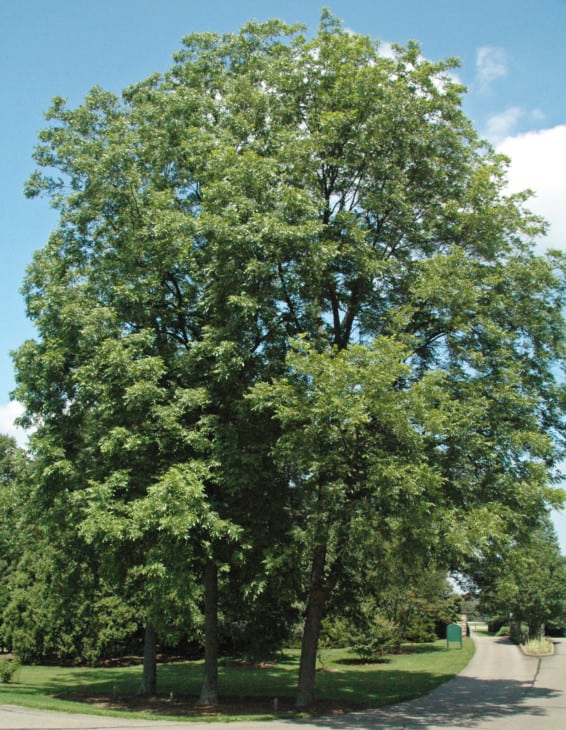
These are the proud State trees of Texas that come from the Hickory family. They grow to become quite large, about 130 feet in height. This is why they are the perfect trees for Texas since they help provide a lot of shade. However, the best part about these trees is that they provide sweet, rich, and buttery pecans that are used to make a pecan pie and various other delicious recipes.
2. Camphor Tree (Cinnamomum Camphora)
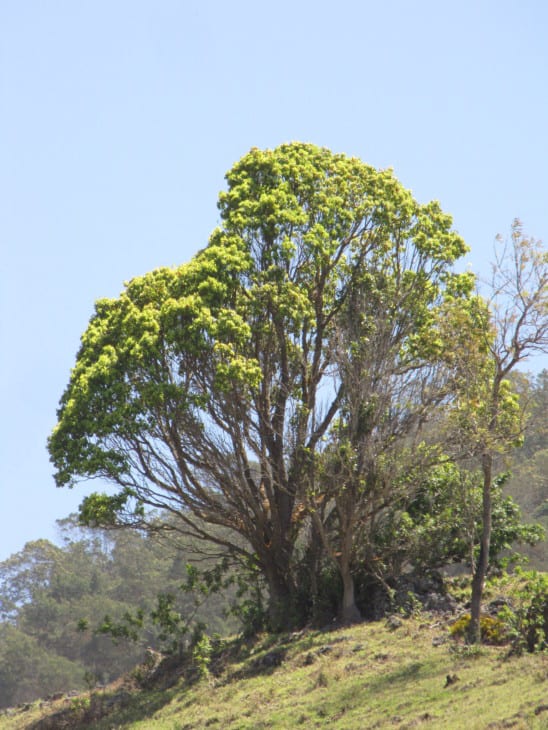
This is a medium-sized tree commonly found in Texas. It provides a ton of shade since its evergreen leaves provide a vast canopy. The tree is also considered to be a natural mosquito repellant. It also bears a black fruit. However, both the fruit and the leaves of the Camphor tree are toxic for humans.
3. Red Maple (Acer Rubrum)
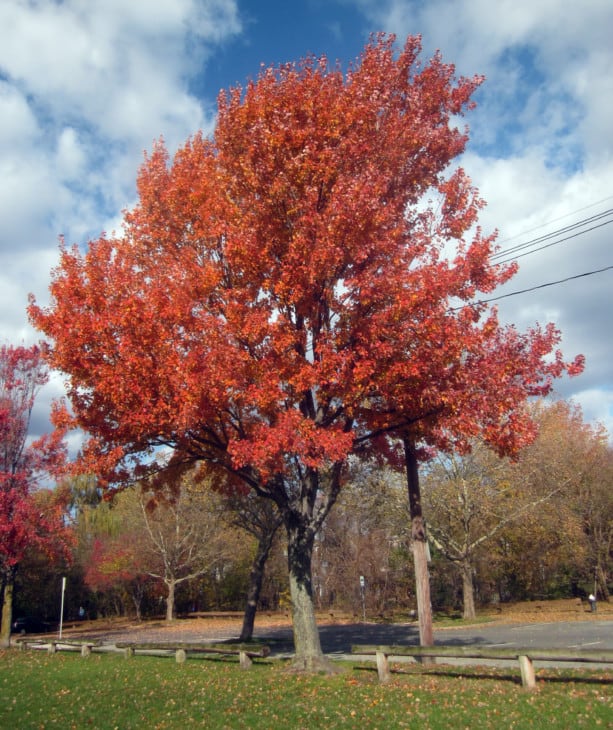
The Red Maple is one of the best options for growing a tree in your yard. It displays crimson leaves throughout the year, but you should expect an even brighter red during the fall. Moreover, the Red Maple is easy to grow and requires little trimming and maintenance. These medium to large trees, however, only thrive in wetter regions.
4. Bonita Ash (Fraxinus Velutina ‘Bonita’)
This is an excellent shade tree that is evergreen and beautiful. The display of the green leaves turning into a bright yellow shade from this tree throughout the fall will likely leave you breathless. The Bonita Ash tree is perfect for summer and dry regions, but it can also withstand high winds.
5. Italian Cypress/Mediterranean Cypress (Cupressus Sempervirens)
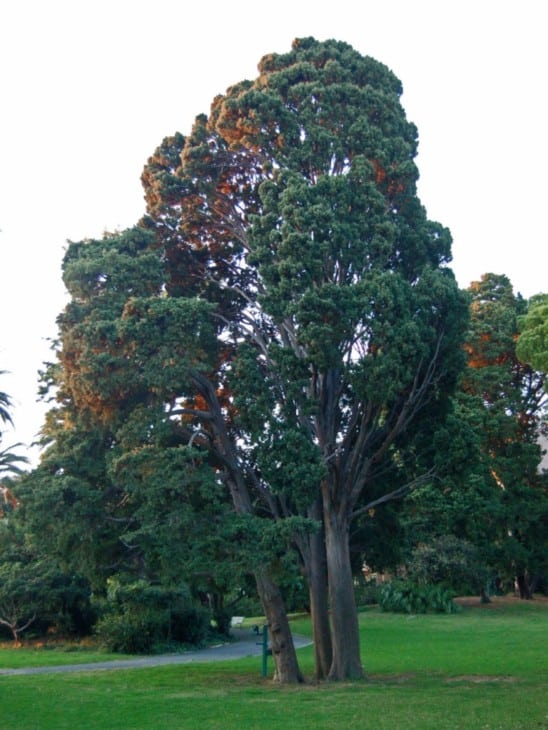
These medium-sized trees grow up to a height of 40 feet. They are extremely drought-resistant, making them perfect for central and southern Texas, where the height and humidity become too high. They are also low maintenance since they don’t require too much watering. But they might require a bit more attention from you if you want them to reach their iconic and slender shape.
6. Cottonwood (Populus)
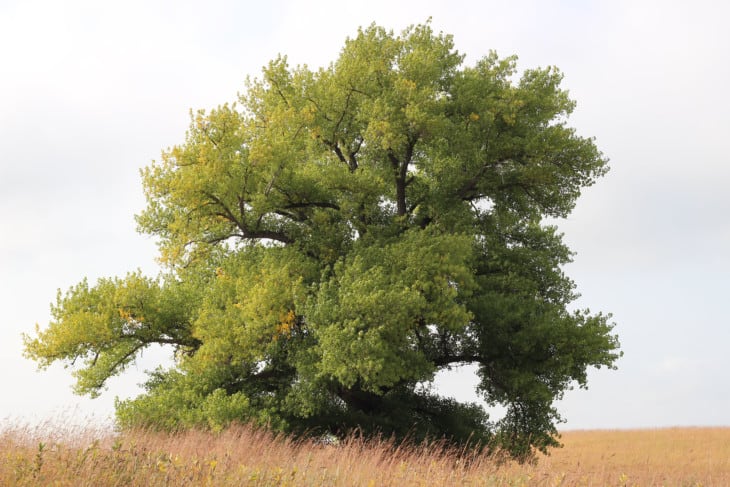
The Cottonwood tree is popular throughout the United States, but especially in Texas. It is not just one of the fastest-growing trees but also one that provides considerable shade. Since the Cottonwood trees require little maintenance and trimming, they are a popular choice for planting at homes in Texas.
7. Sycamore (Platanus Occidentalis)
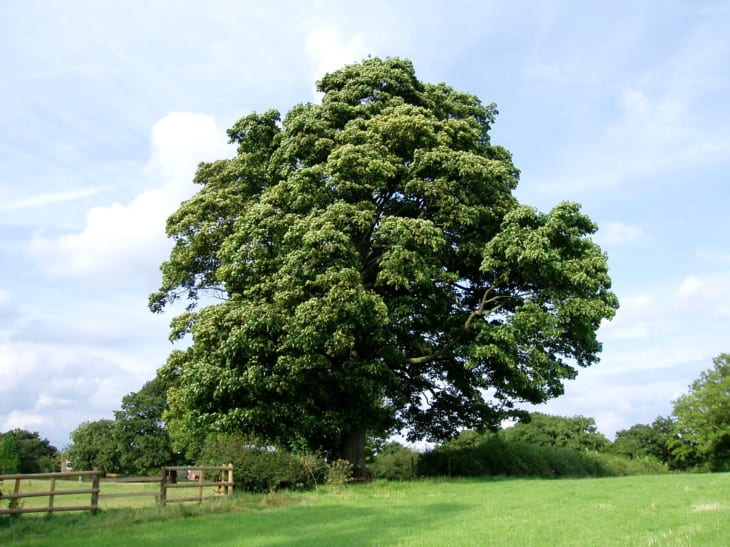
This is one of the most common and tallest trees in Texas. It is also the tallest deciduous tree in North America. The Sycamore can grow to reach heights of 100 feet. If you live in Texas, you can consider planting the Sycamore since it is also easy to maintain and will provide your house with tremendous shade.
8. Tipu Tree (Tipuana Tipu)
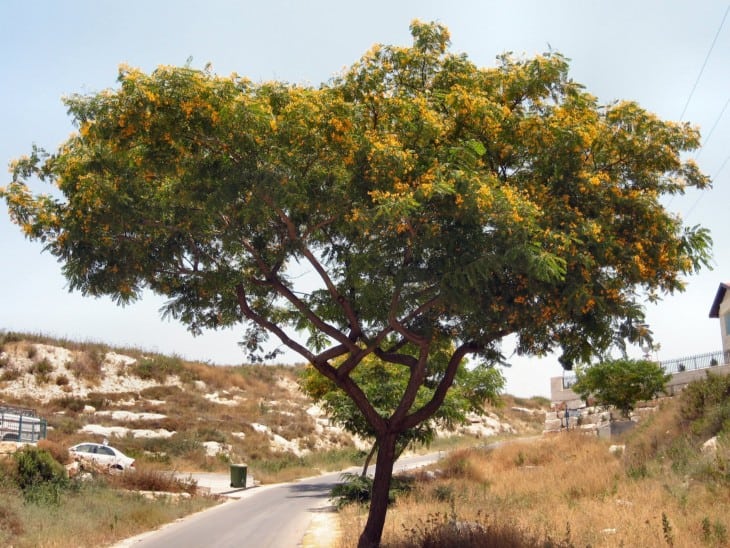
The Tipu tree is one of the most popular trees in Texas and a well-known tree throughout the country. The world-famous tree is known for its wide canopy that provides a lot of shade and its attractive display of golden foliage during the springtime. These South American native trees can be popularly found in warmer climates, especially in Houston.
9. Carrotwood Tree (Cupaniopsis Anacardioides)
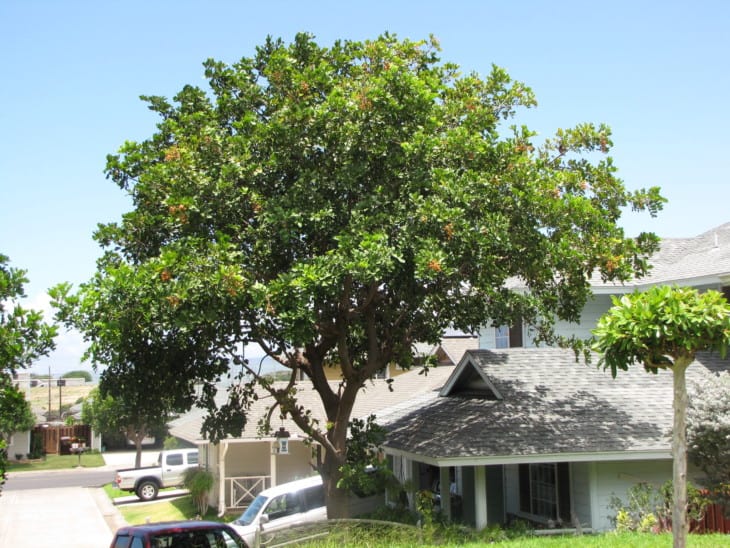
The carrotwood Tree is a small to medium-sized tree that grows up to a height of 30 feet. It has green leaves, white to yellowish flowers, and a large yellow-colored fruit splits open to expose black seeds, which birds widely consume. While this tree is quite popular in Florida, it is also slowly becoming common in Texas.
10. Sissoo Tree (Dalbergia Sissoo)
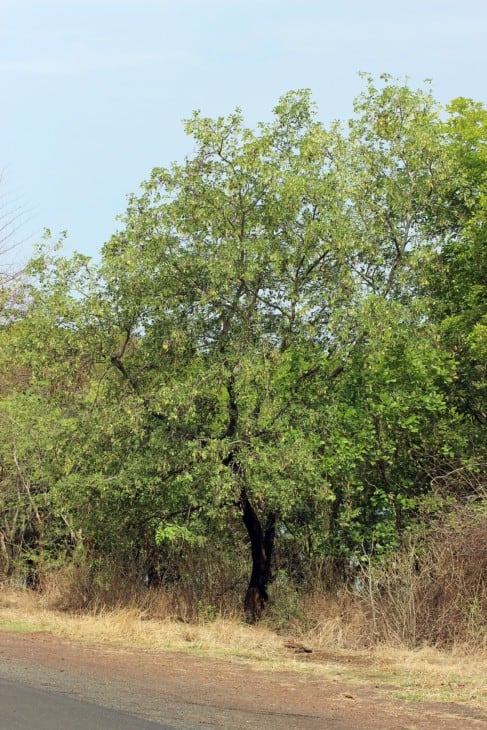
The Sissoo Tree is native to South Asia but is also a common tree in Texas because it is well suited for its hot and humid climate. This fast-growing tree also has sturdy wood, which is used to make a wide range of furniture and marine-grade plywood. The tree is mainly planted throughout the state for ornamental purposes because of its gorgeous green leaves and foliage display.
11. Maidenhair Tree (Ginkgo Biloba)
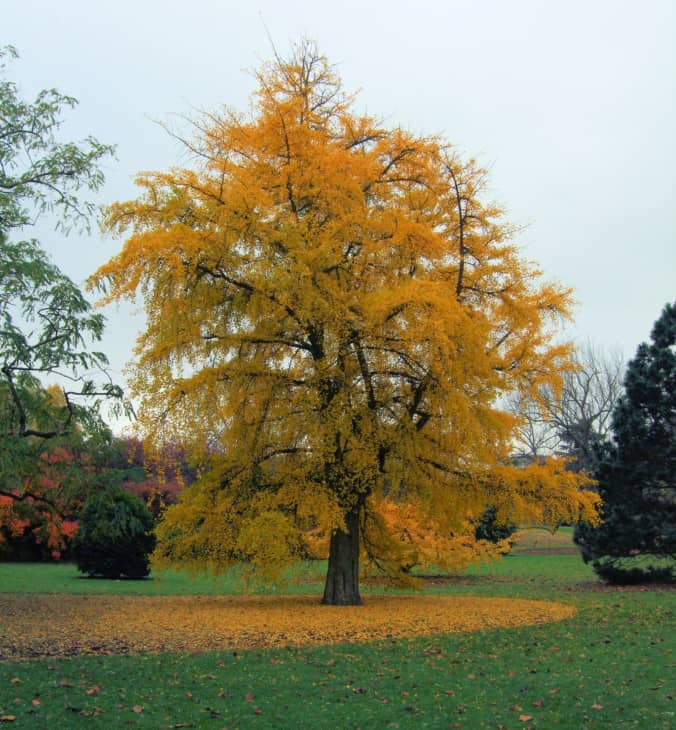
Also known as the Gingko tree, one of the oldest and most famous trees found in Texas. It is undoubtedly one of the oldest trees in the world, dating back to Jurassic times. Today, they are not found in the wild but are still planted throughout Texas as landscape trees because of their attractive display of colors. Although it is a slow-growing tree, it can withstand attacks from disease and insects very well.
12. Mexican Pinyon Pine (Pinus Cembroides)
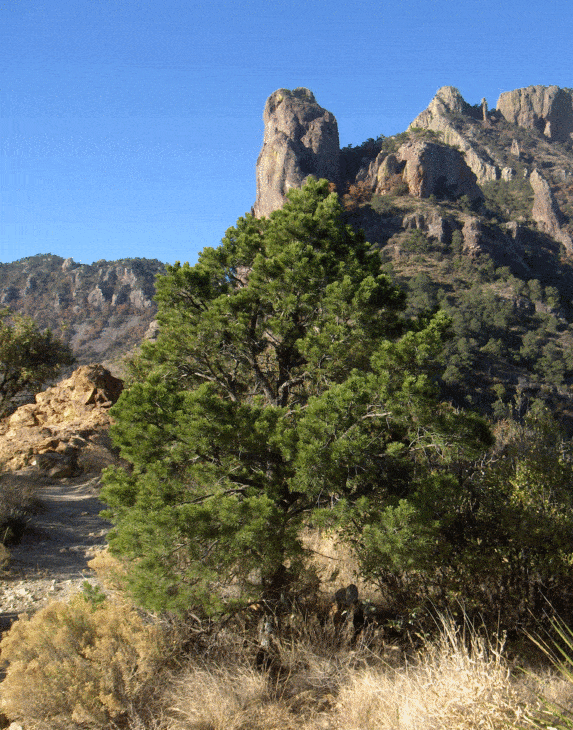
This is a small, bushy, and evergreen tree that grows up to a height of 30 feet. It also features blue-green needles on its branches that grow in three clusters. They also have hard seeds, which are known as pinyon nuts in Mexico. These trees are pretty popular in Mexico, but in the United States, you can only find them in Texas.
13. Ashe Juniper (Juniperus Ashei)
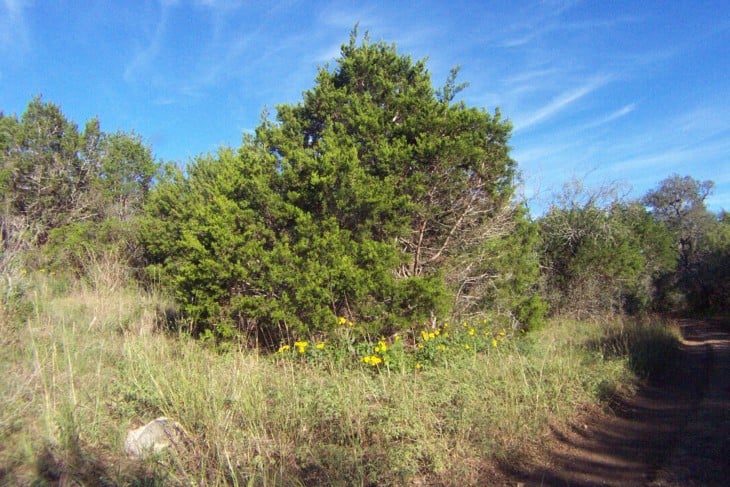
Ashe Junipers are large, fragrant, and beautiful trees found commonly in Central Texas. However, these trees can be quite irritating for people with cedar allergies. The wood from the tree is used to make a variety of things, but most commonly fenceposts. The sweet-tasting berries from the Ashe Junipers are also a popular source of food for animals.
14. Pond Cypress (Taxodium Ascendens)
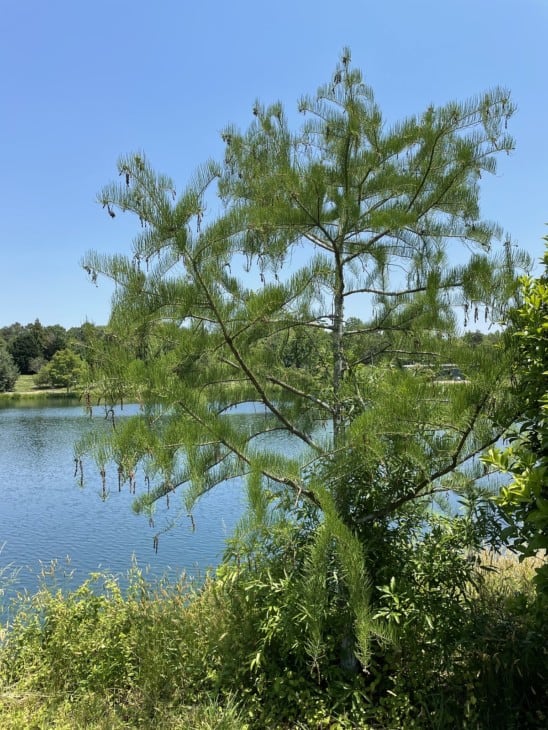
The Pond Cypress tree comes from a family of deciduous conifer trees. This tree adapts to a wide range of soils, including wet, dry, salty, or swampy. This is why they are popular throughout public areas of the state. These are relatively large trees that grow up to a height of 100 feet.
15. Soaptree Yucca (Yucca Elata)
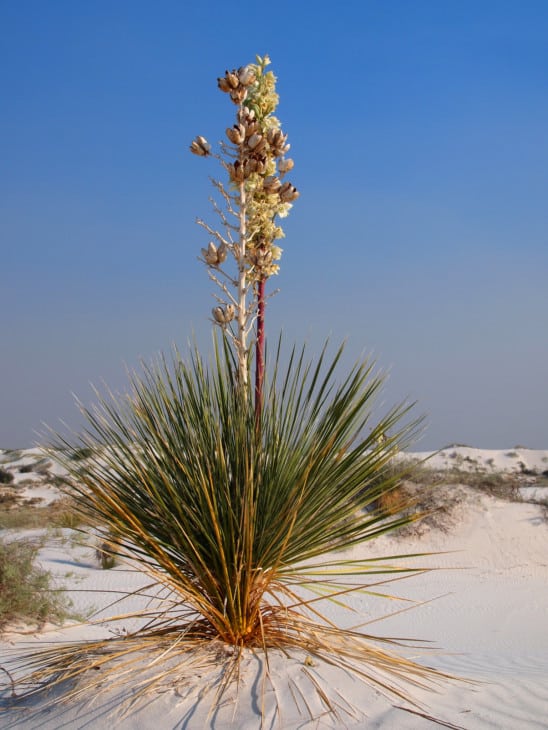
The Soaptree Yucca is certainly a small, slow-growing, ornamental, and attractive tree found in western Texas. It has dense, small, narrow blue-green leaves and woody seed capsules. These trees reach a maximum height of 20 feet and can quickly be grown in dry, well-drained soil under bright sunlight. You can plant them with flower beds, in gardens, or in walkways.
Related: Are Yucca Plants Poisonous?
16. American Smoke Tree (Cotinus Obovatus)
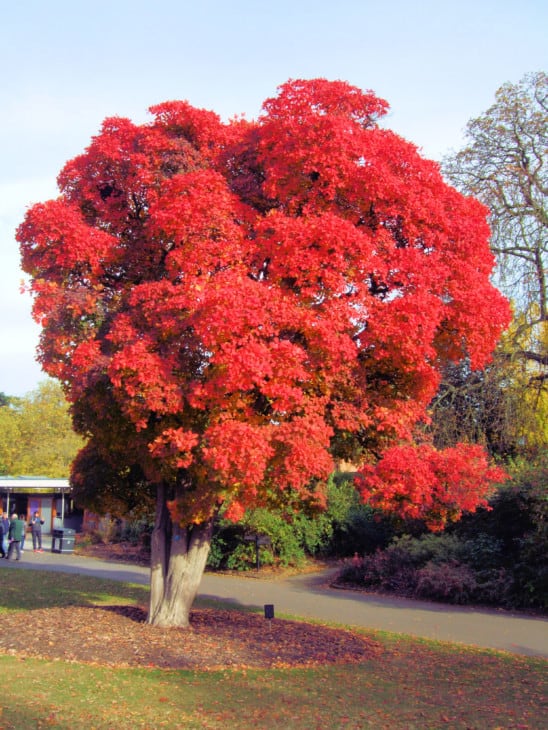
The American Smoke Tree is a Texas native tree that is found on limestone hills and river bluffs. They have showy pink or purple leaves that, from a distance, look like smoke or haze, which is where they get their name from. These trees are heat and drought-resistant and highly tolerable to limestone soils, which is why they are so popular in Texas.
17. Chinese Pistache (Pistacia Chinensis)
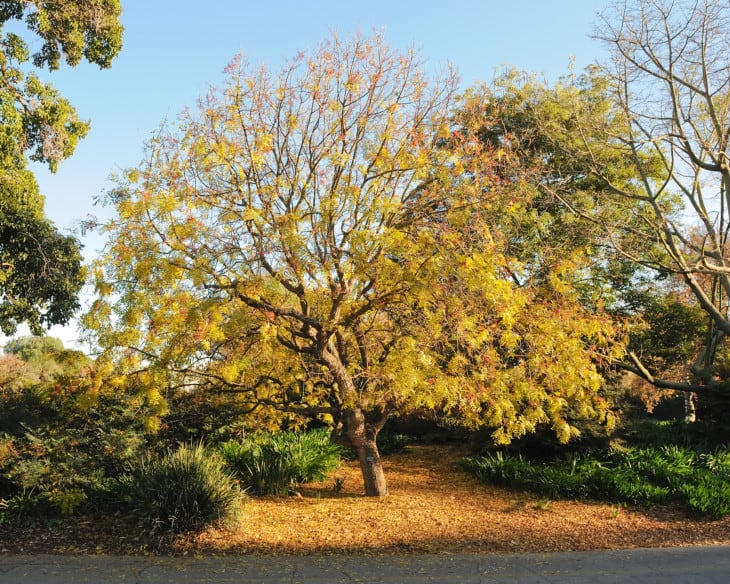
The Chinese Pistachio is a medium-sized tree that reaches a height of 40 feet. During the fall, it has a brilliant and bright crimson color. Throughout the year, it displays a beautiful shade of green. This is why this landscape tree is primarily planted in gardens or public areas. As the name might suggest, it is a Chinese native tree, but now it is commonly found in Texas as well.
18. Winged Sumac (Rhus copallinum)
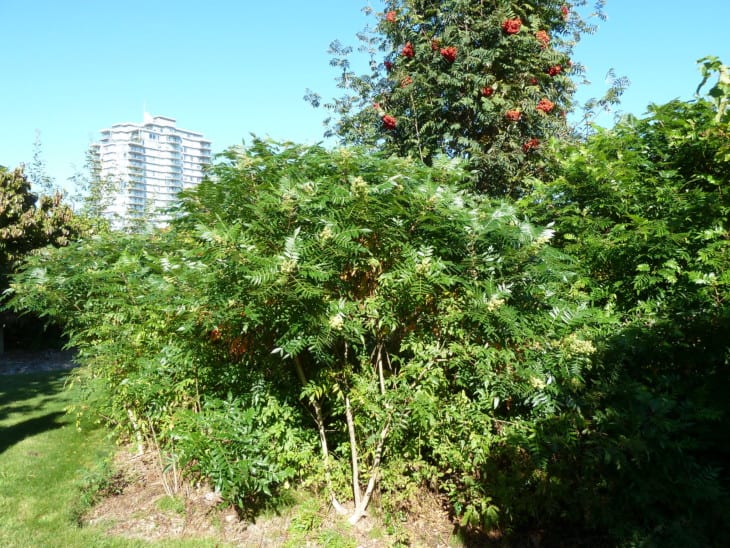
This deciduous is a large shrub or a small tree that reaches a maximum height of 40 feet. It has short, crooked shrubs and open branches. The leaves on the Winged Sumac are dark green that turns reddish-purple during the fall time. You can easily distinguish this tree from other Sumac trees due to its winged leaf axis and watery sap.
19. Pawpaw (Asimina Triloba)
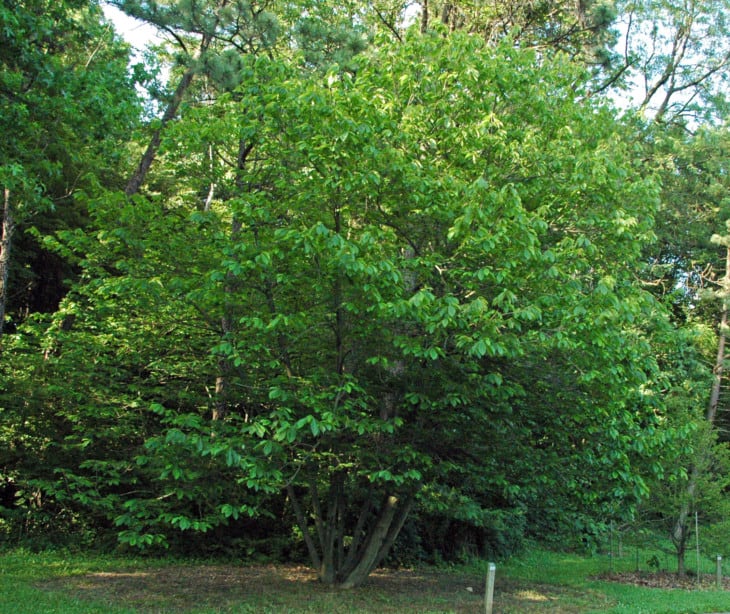
The Pawpaw trees are a popular species of tree found in America, but they are also widely found in Texas. This is a small tree that reaches the height of 30 feet and has light green leaves. You can find Pawpaw along streams in Eastern Texas and mainly along the Red River. They don’t grow in clusters but as single trees or small groves.
20. Possumhaw (Ilex Decidua)
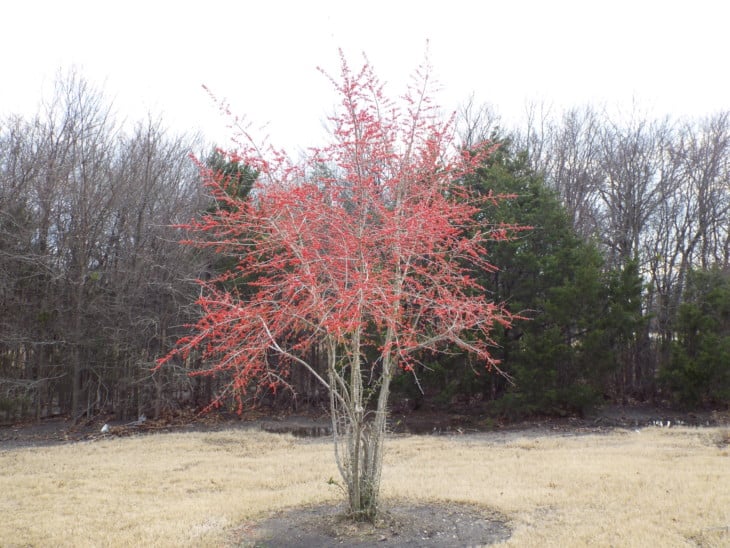
The Possumhaw is a small tree or shrub that grows to a height of 30 feet. It has twiggy and pale-colored branches and gorgeous green leaves. However, what makes Possumhaw so unique are the bright red berries on the female trees that thrive during the wintertime. Opossums, raccoons, songbirds, and various other animals consume this fruit.
21. Devil’s Walking Stick (Aralia Spinosa)
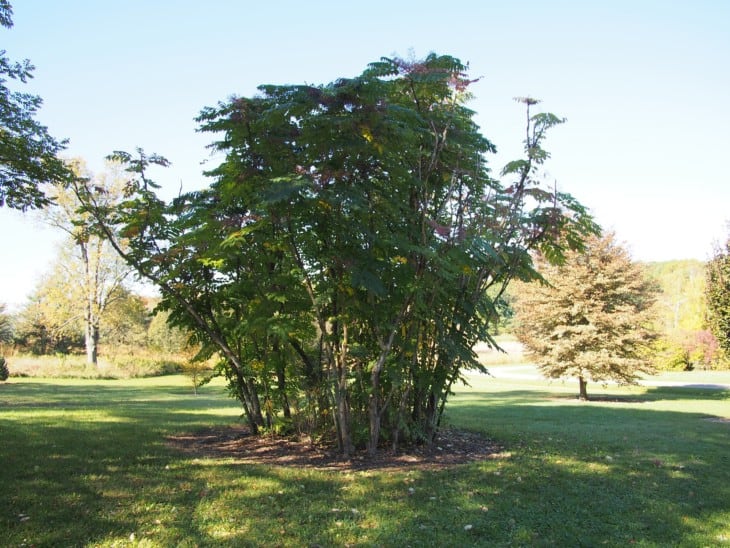
These are unique but large shrubs with few spiny stems and branches. They grow up to a height of 20 feet. Each winter, the Devil’s Walking Stick shoots up to become a long stem with a few small orange prickles. This is where it also gets its unique name from. It is also sometimes called Hercules’ club.
22. Mexican Palmetto (Sabal Mexicana)
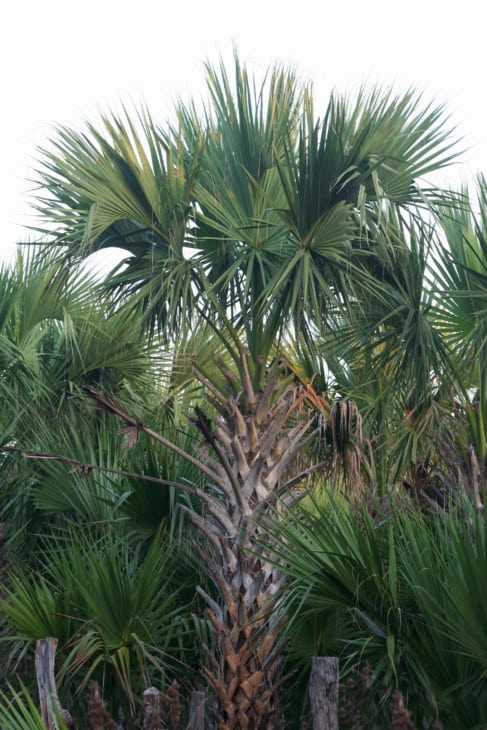
The Mexican Palmetto is a fragrant and winter-resistant tree that grows up to a maximum height of 50 feet and features large, blue-green, fan-shaped, and vibrant leaves. Dark purple fruits also hang in clusters on this tree that animals consume. Since they also have fragrant flowers, you can easily plant them in your garden.
23. American Hornbeam (Carpinus Caroliniana)
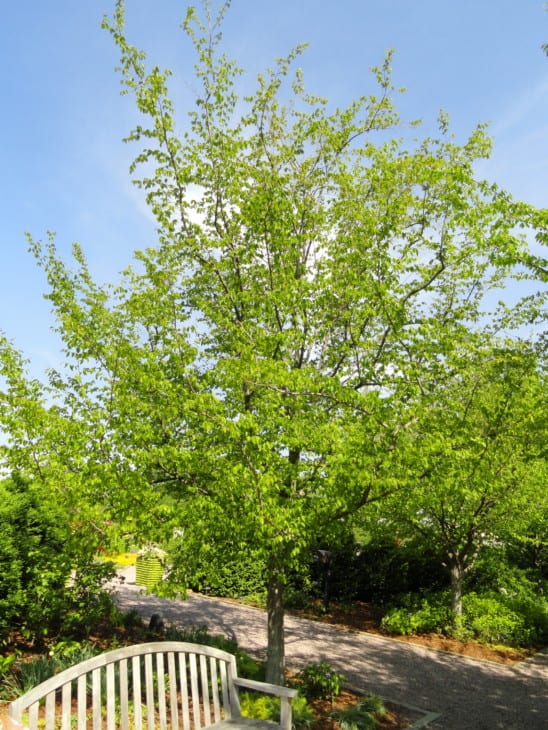
The American Hornbeam is a medium-sized tree that is extremely slow-growing and found generally in forests in East Texas. It is typically 20 to 30 feet high and suitable for acidic and alkaline soils. You can quickly identify this tree through its clusters of sandpapery leaves as well as nuts encased in bladder-like sacks.
24. Southern Catalpa (Catalpa Bignonioides)
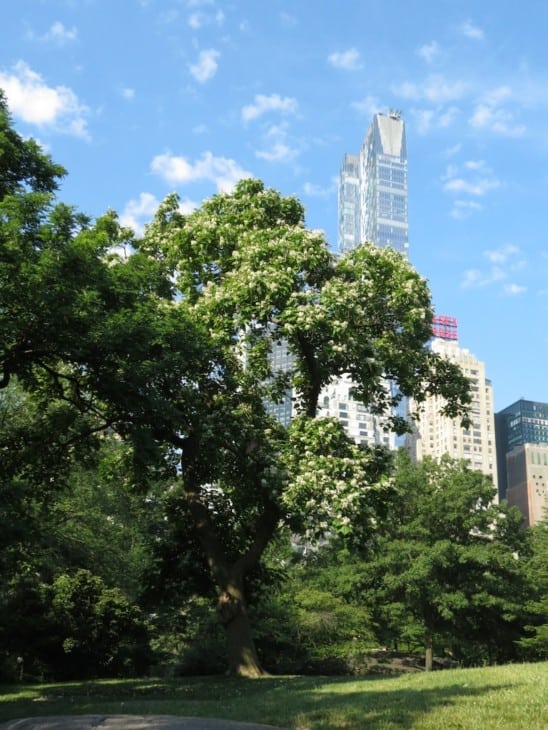
This is a large deciduous tree that features crooked branches and light green, heart-shaped leaves glossy on top and unusually hairy underneath. During springtime, the tree also has white flowers. The Southern Catalpa grows to a height of 60 feet and is completely pest and disease-free that also does not require regular pruning, which makes it an excellent option for planting in gardens.
25. Sugarberry (Celtis Laevigata)
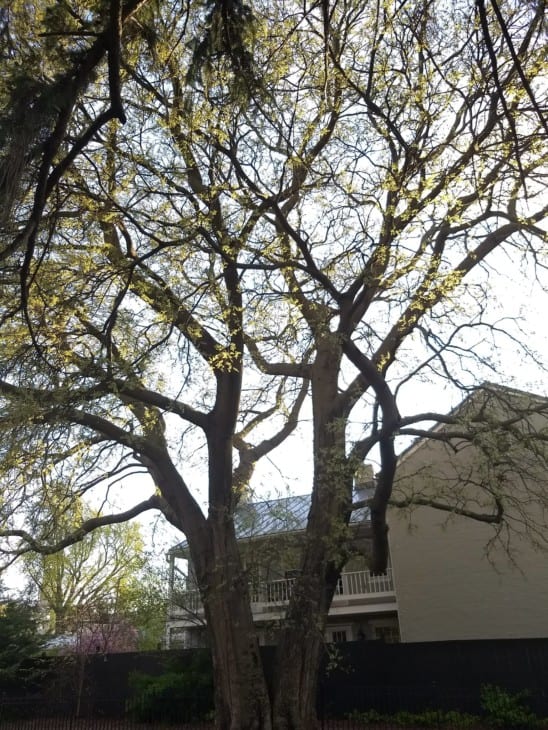
Also known as the Southern Huckleberry, the Sugarberry is a medium-sized tree with broad and drooping branches. It also has a round fruit with a dull red color that various birds consume. You can find the Sugarberry along main streets in Texas. And the wood of the tree is used to make various kinds of furniture, plywood, and athletic goods.
26. American Elder (Sambucus Canadensis)
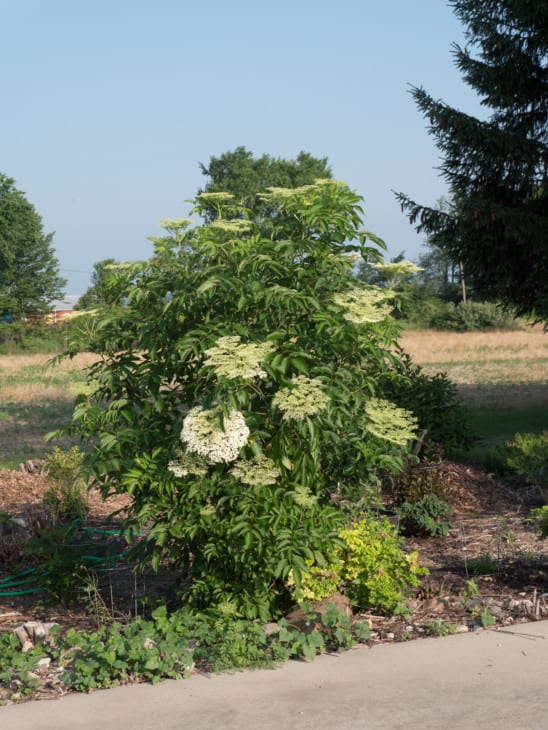
The American elder is a popular shrub or small tree commonly grown in damp soils, mostly along rivers or on swamps. It has several stems and, under the right conditions, can grow up to a height of 30 feet. It has bright green leaflets with white flowers grown during the springtime. The fruit flowers of the American elder are used to make creams, pies, beverages, and candies.
27. Rough leaf Dogwood (Cornus Drummondii)
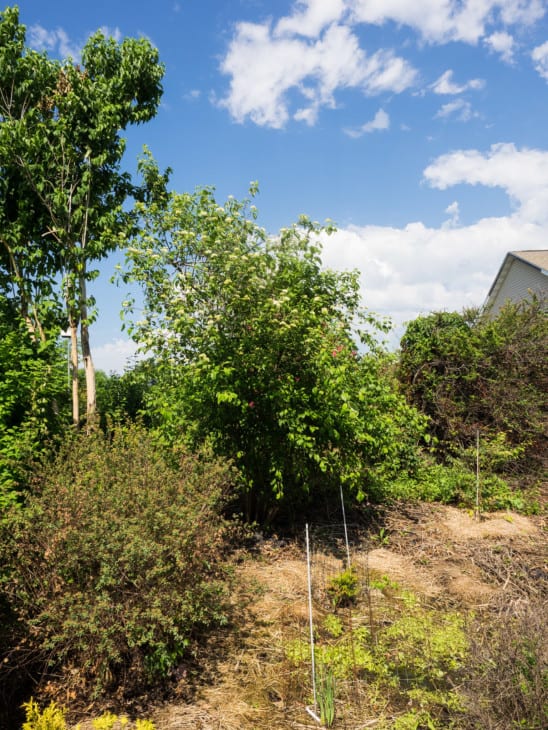
This is a shrub or a small deciduous tree commonly found in Texas. Though it has rough textured green leaves all year round, it forms beautiful clusters of creamy yellow flowers during the springtime. These flowers provide nectar to various butterfly species. Moreover, during the summers, the fragrant flowers give way to the formation of white berries consumed by wildlife.
28. Titi (Cyrilla Racemiflora)
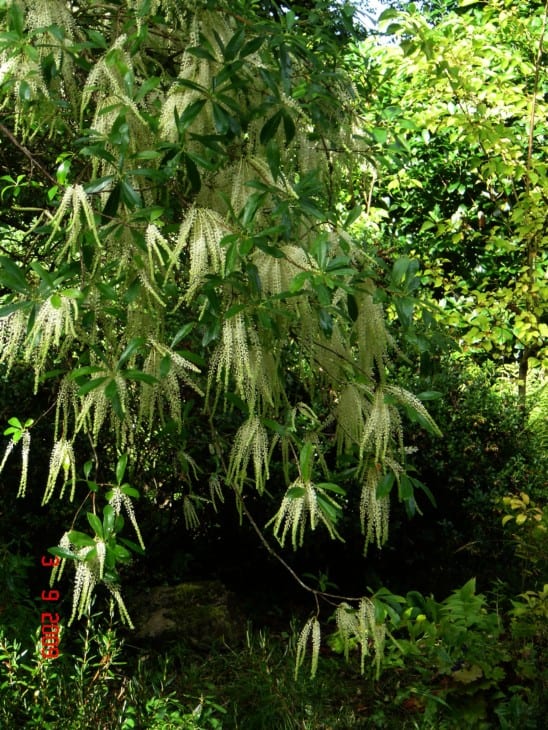
The Titi is a small deciduous tree that does not grow bigger than 30 feet. It is a slender tree with a smooth, cinnamon-colored trunk and branches. The Titi tree is commonly found in North America, South America, and Central America. The leaves of the tree turn into a bright crimson shade during fall and fall by springtime to reveal bright green ones.
29. Texas Persimmon (Diospyros Texana)
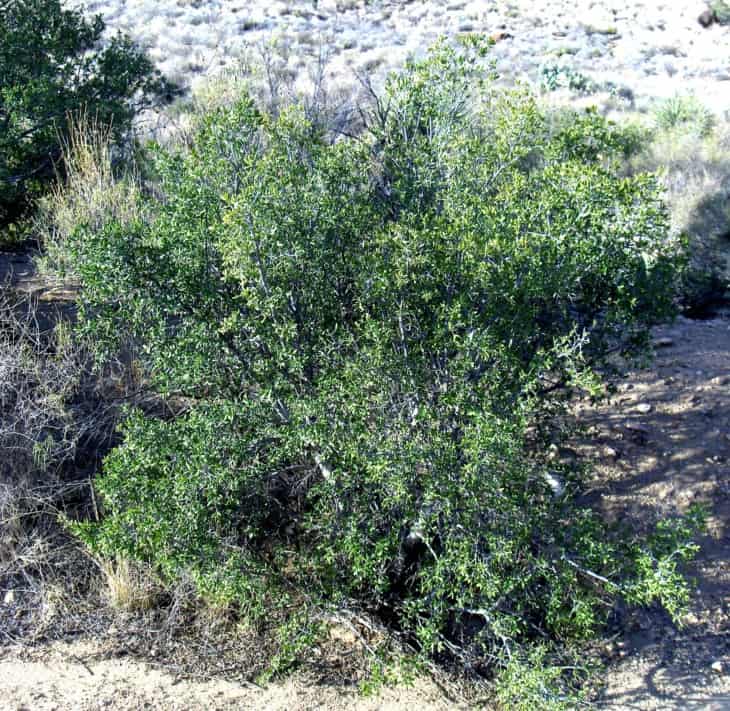
The Texas Persimmon is a very small tree or shrub with multiple trunks. Though it normally has a height of 15 feet, it can grow up to a height of 35 feet as well. It is widespread in central Texas, and you can easily find this tree in bushes in Houston and Bryan. It has whitish branches, and the female tree also has striking fruits normally consumed by birds and other animals.
30. Texas Madrone (Arbutus Xalapensis)
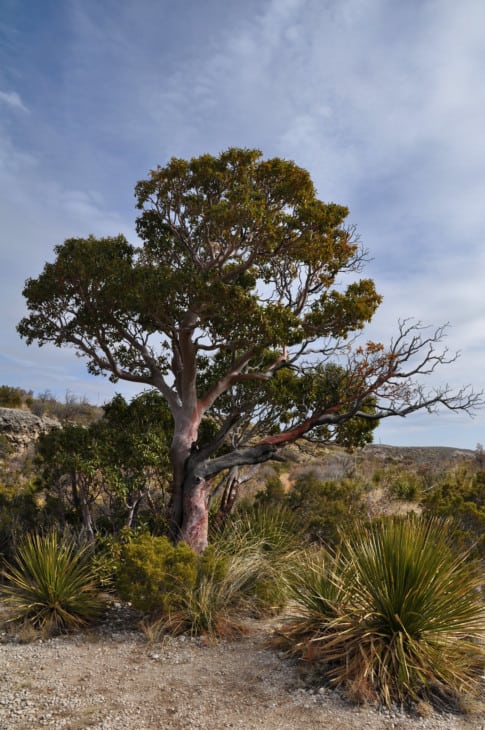
This is another multi-trunked small tree that grows up to a height of 30 feet. It has a red and shiny trunk underneath. Even the dark green leaves on the Texas Madrone have a red tinge. Moreover, it also has white, small, and urn-shaped flowers in clusters on the branches. During the springtime, it also has a red or orange-colored fruit that is edible.
31. Sourwood (Oxydendrum Arboreum)
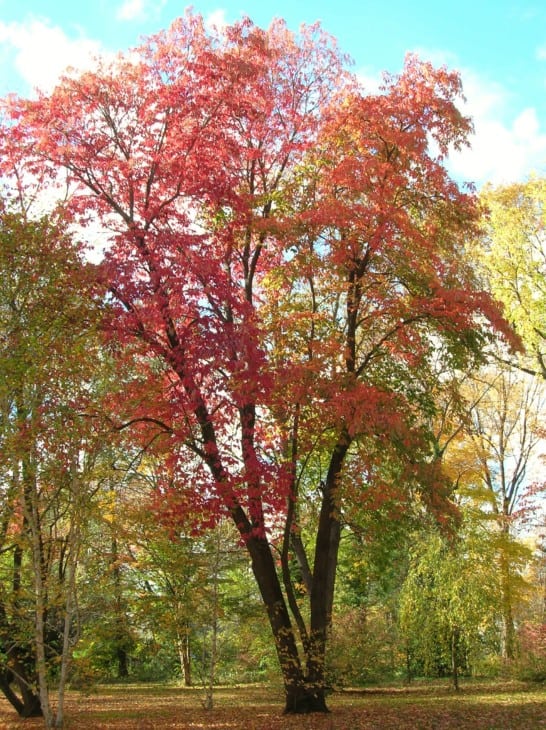
The Sourwood is a small deciduous tree that can grow up to a height of 20 or 30 feet. The tree has delicate and alternative leaves that are sharp and sour to taste, where it gets its name. The trunk is a reddish-brown color, and the foliage during the fall also turns into a bright crimson color. The plant blooms white urn-shaped flowers during the summertime.
32. Farkleberry (Vaccinium Arboreum)
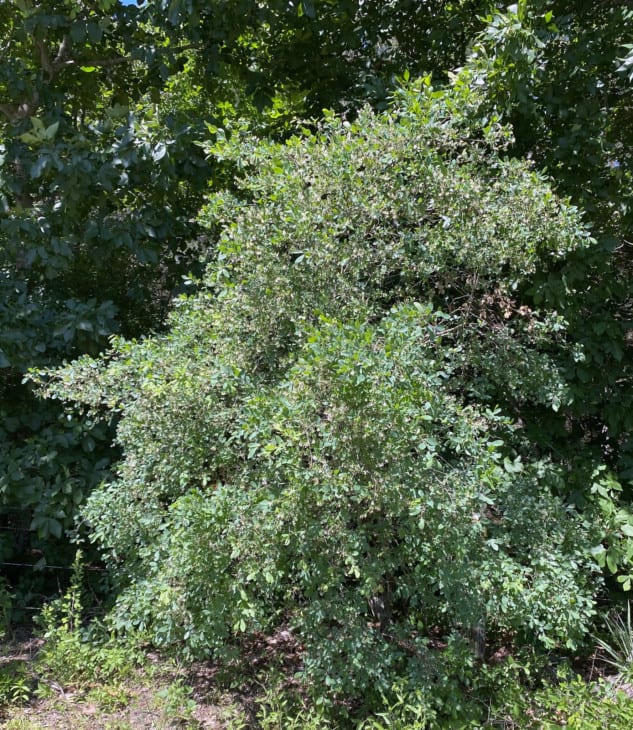
The Farkleberry is a small, evergreen, stiff-branched small tree or large shrub found in forests, hillsides, and wet bottomlands of Texas. It has small, bell-shaped flowers that are white or pink. During the fall time, the Farkleberry tree also has black edible fruit. The autumn is when the green leaves turn to a bright red color.
33. Chinese Tallow Tree (Sapium Sebiferum)
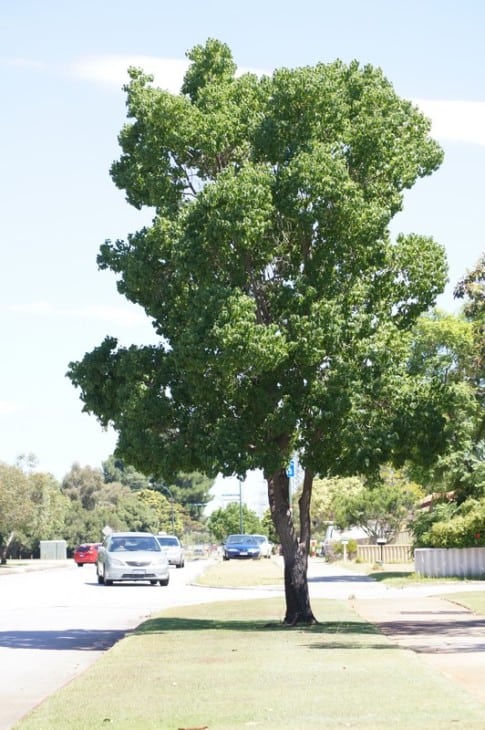
The Chinese Tallow tree is a deciduous tree that reaches the height of 60 feet with oval-shaped bright green leaves. It also has a three-lobed fruit that can be opened to reveal a seed during fall time that is similar to the shape of popcorn. The tree is native to China and Japan but can also be found in Texas, where it thrives in areas abundant with freshwater.
34. Texas Ebony (Ebenopsis Ebano)
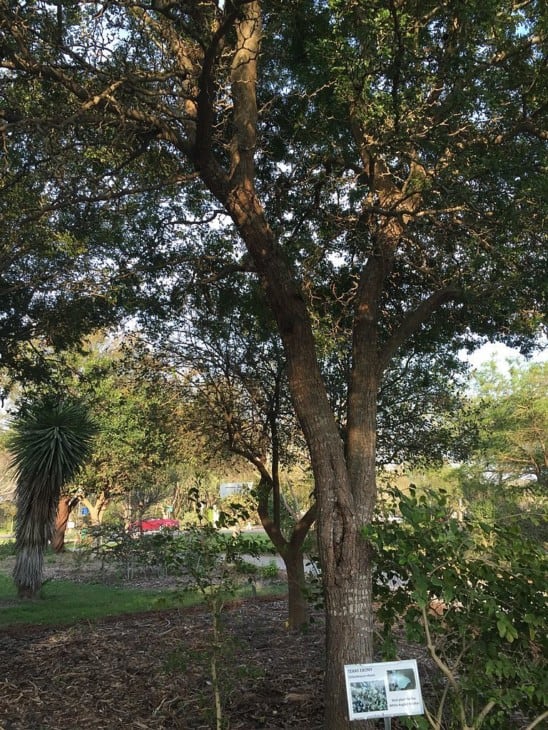
The Texas Ebony is an attractive small tree with a maximum height of 30 feet. It has a dense dark canopy of dark green colored leaves with creamy yellow flower puffs. The tree thrives and blooms during the spring and summertime with these flowers, which is why it is one of the most popular trees planted in various houses and gardens throughout the state.
35. Texas Mountain Laurel (Dermatophyllum Secundiflorum)
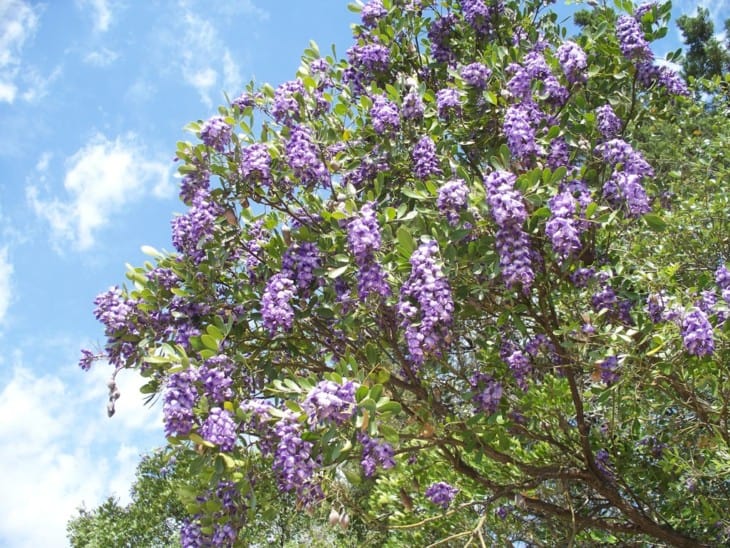
This is a small tree or large shrub with a height of 15 feet when it matures. It has evergreen and leathery leaves and produces dense clusters of flowers at the end of the branches. These flowers don a beautiful shade of purple. The tree’s fruit is a swollen, hanging pod with seed in between.
36. Honeylocust (Gleditsia Triacanthos)
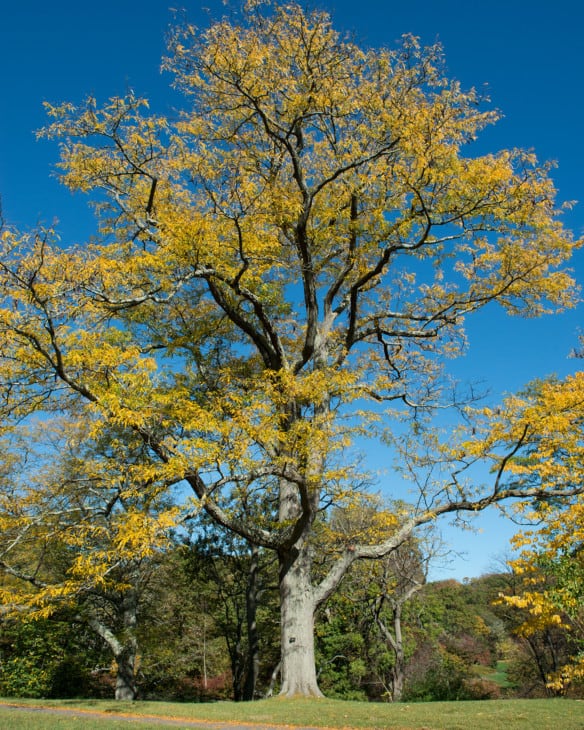
The Honeylocust is a large tree that reaches a height of 80 feet or even more under the right conditions. It can be found commonly in East and Central Texas, where moist-soil exists where it exists as a landscape tree. Some of these honeylocust trees also yield good honey often used in beverages.
37. Kentucky Coffeetree (Gymnocladus Dioicus)
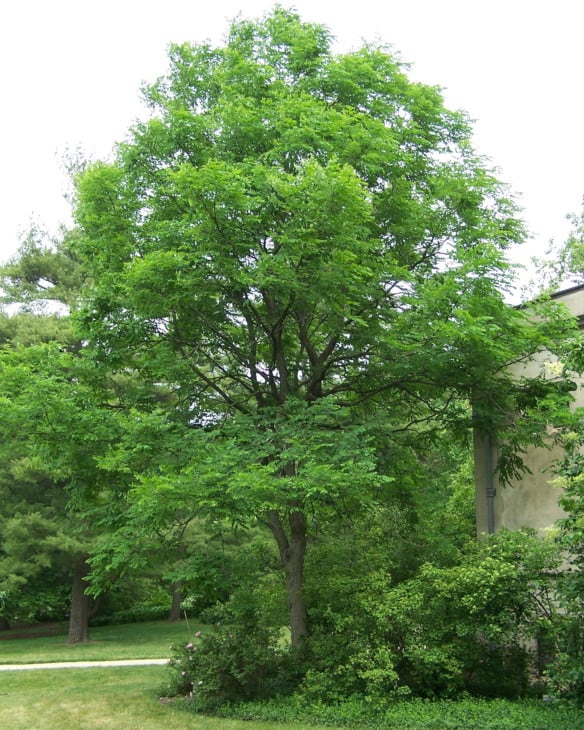
The Kentucky Coffeetree is a large, tall, and slender tree that grows up to a height of 100 feet. It also features a short trunk. It has greenish-white flowers in clusters, and the fruit is a purplish brown pod. The seeds of the Kentucky Coffeetree were often roasted and used as a substitute for coffee. However, the raw seeds from the tree are actually poisonous.







